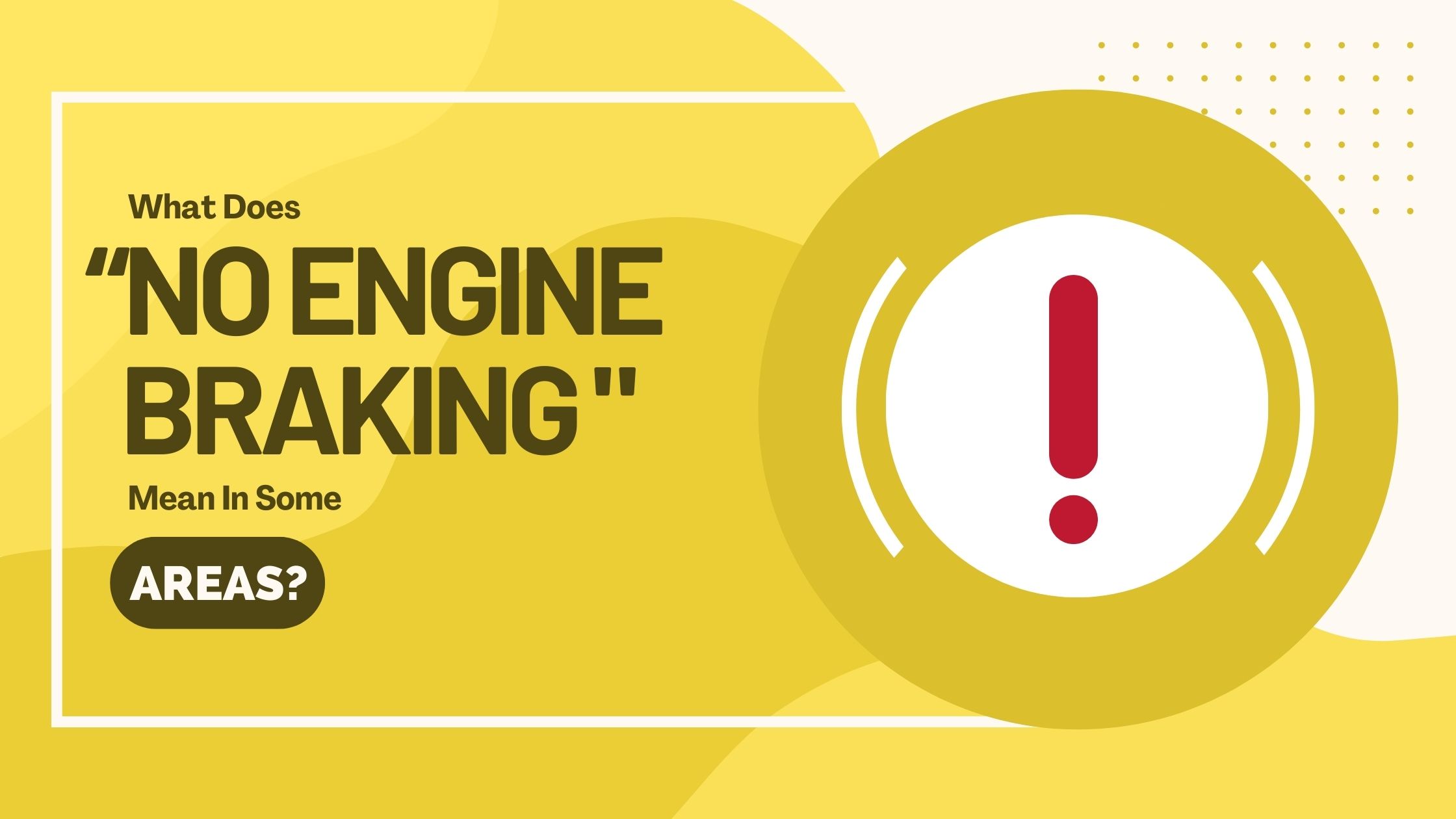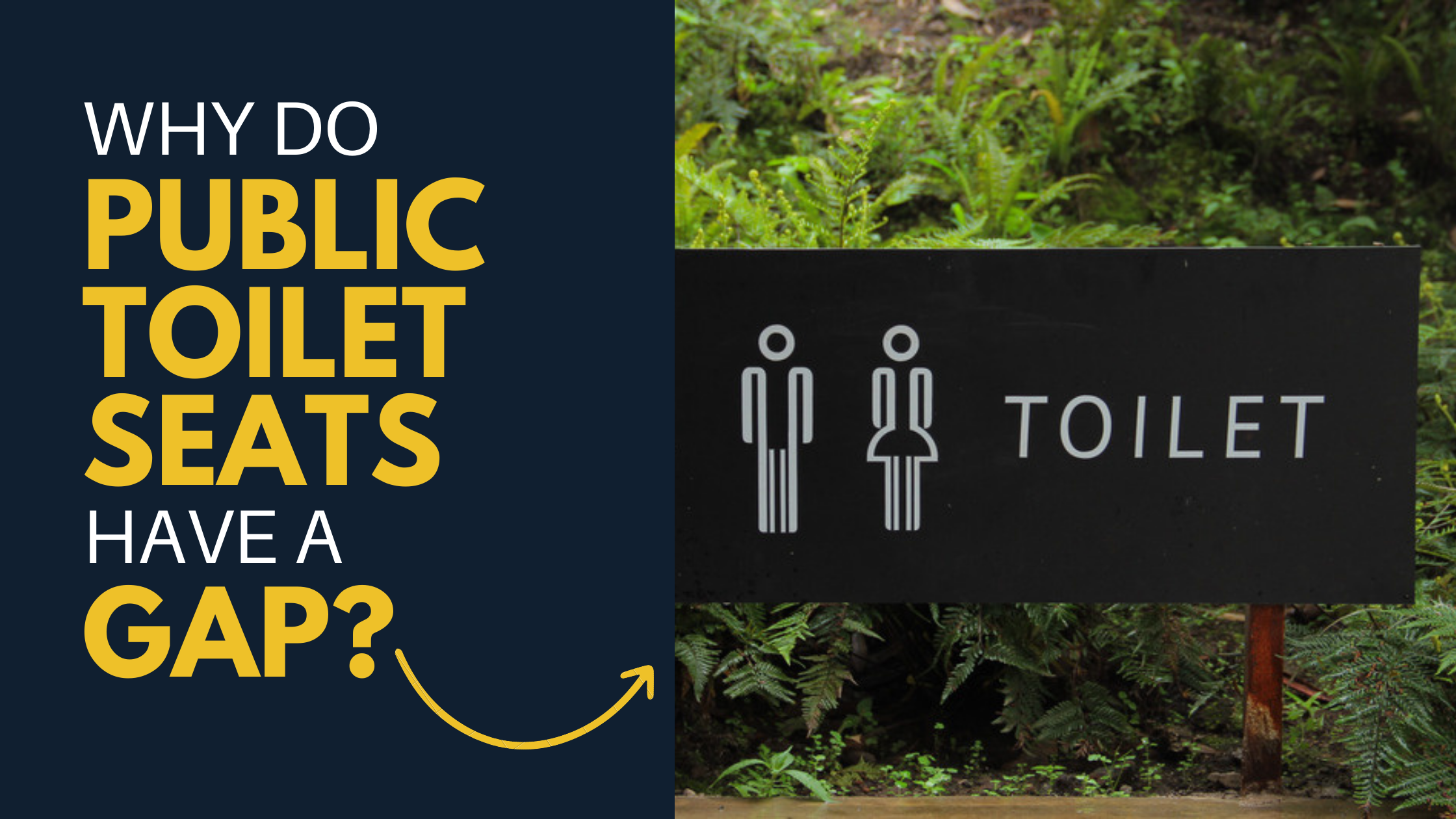We all know what braking is, and most of us know what engine braking is. But what does “No Engine Braking” mean in some areas?
In this post, we’ll explain the difference between braking and engine braking, and we’ll define “no engine braking” for you. We’ll also discuss the advantages and disadvantages of using no engine braking.
Stay tuned!
What Does “No Engine Braking” Mean In Some Areas?
“No engine braking” simply means that the engine will not provide any resistance when you take your foot off the throttle. When you see signs saying “No Engine Braking” in some areas it means that you are not allowed to perform engine braking in those areas.
When you take your foot off a car’s throttle with an automatic transmission, the transmission will automatically upshift to the next highest gear. This has the effect of reducing engine speed without using the brakes. In some cases, it may also help to reduce fuel consumption.
This can be useful in certain driving situations, such as when approaching a corner. Reducing engine braking can reduce the risk of overshooting the turn and making a mistake. Ultimately, it is up to the driver to decide when to use engine braking and when to avoid it.
When driving a car with an automatic transmission, there is no engine braking because the engine is disconnected from the wheels when you let off the gas. The only braking comes from the pads’ friction against the rotors and drums. In some areas, “no engine braking” means that you cannot downshift into a lower gear to slow down more quickly.
This can be a problem if you are approaching a stop sign or stop light and need to come to a stop quickly.
Fortunately, most modern cars have electronic controls that prevent you from accidentally engaging the wrong gear, so you don’t have to worry about accidentally breaking the law.
However, it is still important to be aware of the rules in your area to avoid getting ticketed.
Why Is Engine Braking Prohibited In Some Areas?
Engine braking is prohibited in some areas because it can cause excessive wear on brake pads and discs. It is also prohibited in certain areas because it causes loud noises which can be seen as disturbing in an otherwise quiet neighborhood.
While engine braking may seem like an efficient way to slow down, it can be dangerous in some situations.
When your engine brakes, the car’s weight is transferred from the wheels to the engine. This can cause the wheels to lose traction, especially on wet or icy roads.
In addition, engine braking can wear out your brakes more quickly, making it more likely that you’ll have a brake failure when you need it most. For these reasons, many states have laws prohibiting engine braking in certain areas.
Why Do Some Areas Have Boards Saying “No Engine Braking”?
When you see a “no engine brake” sign, you are not supposed to use your engine to slow down in those areas because:
- It can wear down your engine faster.
- It can overheat your engine, causing engine damage.
- It can be dangerous to other drivers following too closely.
Additionally, some areas put up “No Engine Braking” for trucks, especially the big diesel trucks that produce a lot of noise due to engine braking. These areas put up such signs to control noise pollution in an otherwise quiet neighborhood.
So, when you see a no-engine brake sign, remember to use your regular brakes instead.
Additionally, no engine brake signs are usually present because there is a steep downhill ahead, and using your engine brake could cause you to lose control of your vehicle. Instead, you should use your regular brakes to slow down.
Many people think that they can save fuel by using their engine brake, but this is not the case. Using your engine brake can cause your engine to work harder, which will use more fuel in the long run.
So, next time you see a “no engine brake” sign, remember to brake the old-fashioned way. It might take a little longer, but it will be safer and more fuel-efficient.
What Is Engine Braking?
Engine braking is a technique used by drivers to slow down their vehicles without using the brakes. It is accomplished by depressing the clutch and shifting it into a lower gear so that the engine speed increases while the vehicle speed decreases.
Some drivers use engine braking when descending steep hills to help control their speed and avoid wearing out their brakes.
Engine braking can also be used in stop-and-go traffic to keep the vehicle from lurching forward when the accelerator is released.
Although it is not as effective as braking with the brakes, engine braking can be a useful tool for slowing down a vehicle.
How Does Engine Braking Work?
Engine braking works by reducing the amount of fuel delivered to the engine, reducing the engine’s power output. As the engine’s power is reduced, the vehicle’s speed will begin to decrease.
Usually, when you step on the brake pedal in your car, hydraulic pressure builds up in the braking system, causing the brakes to engage and slow down the wheels. However, this is not the only way to slow down a car.
There are two main ways that engine braking can be achieved. The first is by disengaging the clutch, which will cause the engine to continue running but disconnect it from the wheels.
The second is by shifting into a lower gear, increasing engine resistance, and slowing down the car.
While both methods of engine braking are effective, shifting into a lower gear is generally considered safer as it doesn’t put as much stress on the engine.
Engine braking can be useful when approaching a stop sign or stoplight or when traveling down a long, steep hill. It can also be helpful when attempting to maintain a safe following distance behind another vehicle.
When used correctly, engine braking can help to improve fuel economy and extend the life of your brakes. However, it is important to use caution during engine braking, as it can increase the risk of skidding or losing control of the vehicle.
Is Engine Braking Bad For Your Car?

Credit: Photo by Garett Mizunaka on Unsplash
Many people believe engine braking is bad for your car, but this is not necessarily true. While it is true that engine braking puts additional strain on the engine, it is not necessarily harmful if it is done properly.
If you do not overuse engine braking and keep the engine properly maintained, then there is no reason to believe it will damage your car.
In fact, some driving experts even believe that engine braking can be beneficial, as it can help to extend the life of your brakes by reducing wear and tear.
Ultimately, whether or not you use engine braking is a personal preference. If you are concerned about damaging your car, you may want to avoid using it.
However, if you are comfortable with using engine braking, there is no reason to avoid it.
Is Engine Braking Bad For Your Motorcycle?
Engine braking is generally not a good idea to rely on for your motorcycle because it puts extra wear and tears on your engine. Over time, it will put a lot of strain on the internals of the motorcycle which will lead to decreased performance.
When you’re constantly riding the clutch and revving the engine to slow down, you’re putting a lot of strain on the internals of your motorcycle.
Second, it’s not as effective as using your brakes. Your motorcycle’s brakes are designed to slow you down quickly and safely. Engine braking is much less precise and can be dangerous if you’re not careful.
Finally, it’s just not as fun! Riding a motorcycle is about enjoying the wind in your face and the open road ahead of you. Constantly using engine braking takes away from that experience.
So, while engine braking can be helpful in some situations, it’s generally best to avoid it if possible on a motorcycle.
Is Engine Braking Bad For Automatic Transmission?
Engine braking could be bad for automatic transmissions because they are designed to handle some engine braking, but too much engine braking can be hard on the transmission. That’s because engine braking puts extra stress on the gears in the transmission.
When coming down a long, steep mountain road, it’s best to use the brakes to control your speed. That way, you won’t put as much wear and tear on your automatic transmission.
When you drive a car with an automatic transmission, the engine is always connected to the wheels through a series of gears. As you apply the brakes, the gears begin to slow down the engine.
However, if you downshift too quickly or brake too hard, the engine can speed up too much and stress the transmission. Over time, this can lead to transmission damage and decreased fuel efficiency.
For this reason, it is important to avoid braking too hard or shifting too quickly when driving an automatic car.
If you find yourself in a situation where you need to brake quickly, make sure to ease up on the accelerator before you engage the brakes.
What are the Benefits of Engine Braking?
The engine brake has three main benefits for drivers. Despite many negative reviews about engine brakes, the following benefits may change your mind.
1. It Reduces Wear on Your Brakes
The main benefit of engine braking is that it significantly reduces wear on your brakes. When you use your brakes to slow down, the brake pads rub against the rotors to create friction, which produces heat and causes wear. Over time, this can lead to expensive repairs or replacements.
It’s estimated that engine braking can extend the life of your brakes by up to 70%. So, engine braking is a great option if you’re looking to save money on maintenance and repairs.
2. It’s Safer in Certain Situations
Another benefit of engine braking is that it can be safer in certain situations. If you need to stop quickly, it takes less time to slow down using engine braking than it does using your brakes alone.
This can be especially helpful when driving in slippery conditions or on a steep hill.
3. It Helps You Save Fuel

Credit: Photo by Dawn McDonald on Unsplash
Believe it or not, engine braking can also help you save fuel. When you use your brakes to slow down, your car has to work harder to maintain speed. This uses more fuel than if you were to simply let off the gas and allow the car to slow down on its own.
So, engine braking is a great option if you’re looking to be more fuel-efficient.
4. It Gives You More Control
Another benefit of engine braking is that it gives you more control over your vehicle. If you’re driving where quick stops are necessary, such as in city traffic or bad weather, being able to slow down quickly can be a lifesaver.
5. It’s Easy to Do
Yes, engine braking is easy to do. All you have to do is let off the gas and allow the car to slow down on its own. You don’t have to worry about pressing the brake pedal or making sudden movements.
6. It Could Be Better for the Engine
Another good reason to use engine braking is that it’s better for the engine. When you brake, the car’s engine must work harder to maintain speed. This puts extra strain on the engine and can cause it to wear out more quickly.
On the other hand, engine braking doesn’t put too much extra strain on the engine. So, if you’re looking to extend the life of your car’s engine, using engine braking is a great option.
7. It’s quieter
Engine braking is quieter than braking with your brakes alone. When you use your brakes, the pads rub against the rotors to create friction, which produces a loud noise. Engine braking doesn’t create any friction, so it’s much quieter.
What Are The Drawbacks Of Engine Braking?
Of course, engine braking isn’t perfect. There are a few potential downsides to consider before you start using it.
-
Increases Wear On Your Engine
One downside of engine braking is that it can increase wear on your engine. When you let off the gas, the car’s engine has to work harder to maintain its speed. This can cause the engine to wear out more quickly.
-
Makes Car Less Stable
Another downside of engine braking is that it can make your car less stable.
When you use your brakes to slow down, the car’s weight is transferred from the front wheels to the back wheels.
This helps keep the car stable. However, when you use engine braking, the weight is transferred from the back wheels to the front wheels.
This can make the car less stable, especially in slippery conditions.
-
Bad For Transmission
Finally, engine braking can be hard on your transmission. The car’s transmission doesn’t have to work as hard when you use your brakes to slow down.
However, when you use engine braking, the transmission has to work harder to maintain the car’s speed. This can cause the transmission to wear out more quickly.
What Does No Engine Brake Mean On The Highway?
When you see the signs that tell you “no engine brake” on the highway, it means that you’re not supposed to use your engine to slow down. This is usually because it’s too steep of a hill and your brakes could overheat, or because there’s a high risk of rockslides.
Instead, you should downshift so that your engine is in a lower gear and then use your brakes to control your speed.
You may also see the signs when there are other vehicles on the road, such as logging trucks, that have their brakes engaged and you don’t want to get caught behind them. So remember, when you see those signs, it means “no engine brake”.
How Common Is The “No Engine Brake” Sign?
No engine brake signs are not as common as they used to be. However, they can still be seen in some areas, particularly in urban areas where noise pollution is a concern.
However, the engine brake can also be noisy, so many cities have enacted ordinances that prohibit its use.
As a result, no engine brake signs are more likely to be seen in urban areas than in rural areas.
Why Do Truckers Use Engine Brakes?
Truckers use engine brakes for a few different reasons. First, engine braking is a great way to control your speed when going downhill. This is because it helps keep the truck’s brakes from overheating. Second, engine braking can be used to slow down without using the truck’s brakes.
The latter is helpful if the truck’s brakes are worn out or if they’re not working properly. Finally, engine braking can be used to help the truck stop more quickly in an emergency situation.
What Happens If You Use Engine Braking On A No Engine Brake Sign?
If you use engine braking on a no-engine brake sign, you could be fined. In some states, the fine for using engine braking in an area where it’s not allowed is $500. So, if you see a no-engine brake sign, downshift and use your brakes instead.
Does Engine Braking Wear Out the Clutch?
Engine braking does not wear out the clutch. However, it can cause the clutch to slip if you’re not careful. So, if you’re going to use engine braking, be sure to downshift slowly and smoothly. Also, be sure to let off the gas before you engage the clutch.
If you do this, you shouldn’t have any problems with your clutch.
When Should You Not Use an Engine Brake?
There are a few situations when you shouldn’t use an engine brake. First, if you’re going downhill and the road is wet or icy, it’s best to use your brakes instead of your engine to slow down. The car is less stable in these conditions.
Second, if you’re going downhill and there’s a risk of rockslides, it’s best to use your brakes instead of your engine to slow down. This is because rocks can become dislodged and hit your car if you’re using engine braking.
Finally, if you’re in an urban area where noise pollution is a concern, it’s best to use your brakes instead of your engine to slow down.
How Do I Know If My Car Has Engine Braking?
Most cars nowadays have engine braking. However, if you’re not sure if your car has it or not, the best way to find out is to consult your car’s owner’s manual. It will likely have information on whether or not your car has engine braking.
Is Downshifting Bad For Your Car?

Credit: Photo by Elena Mozhvilo on Unsplash
No, in fact, downshifting is a great way to get more power out of your engine. By shifting into a lower gear, you can increase your RPMs and get a boost of speed. It can be useful for going down a steep hill or for quick acceleration.
However, downshifting can damage your car’s engine if it’s not done properly.
When you downshift, the engine has to work harder to maintain the same speed. This can put a strain on the engine and transmission, and over time, it can cause wear and tear.
Additionally, you could damage the clutch if you shift too early or too late. So, while downshifting can be helpful in some situations, it’s important to know how to do it correctly to avoid damaging your car.
When To Use Engine Braking?
When you use engine braking, you’re essentially using the engine to slow down the car. This can be useful in various situations, such as when you’re coming down a long hill or when you need to slow down quickly.
However, there are a few things to keep in mind when using engine braking. First, be aware that it can put extra strain on the engine.
Second, you’ll need to downshift to lower gears to get the maximum effect from engine braking.
And finally, remember that engine braking won’t completely stop the car – you’ll still need to use the brakes at some point.
With these things in mind, engine braking can be a great way to slow down your vehicle safely and efficiently.
Take Away!
Hopefully, you now know what “No Engine Braking” means in some areas.
Signs are placed along the side of the road for a reason, and it’s important to know what they mean. Next time you’re on the highway and see a “No Engine Braking” sign, remember that you should use your brakes to slow down instead of relying on the engine.
It might take a little longer to get where you’re going, but following these signs will keep you safe and help prevent accidents.







